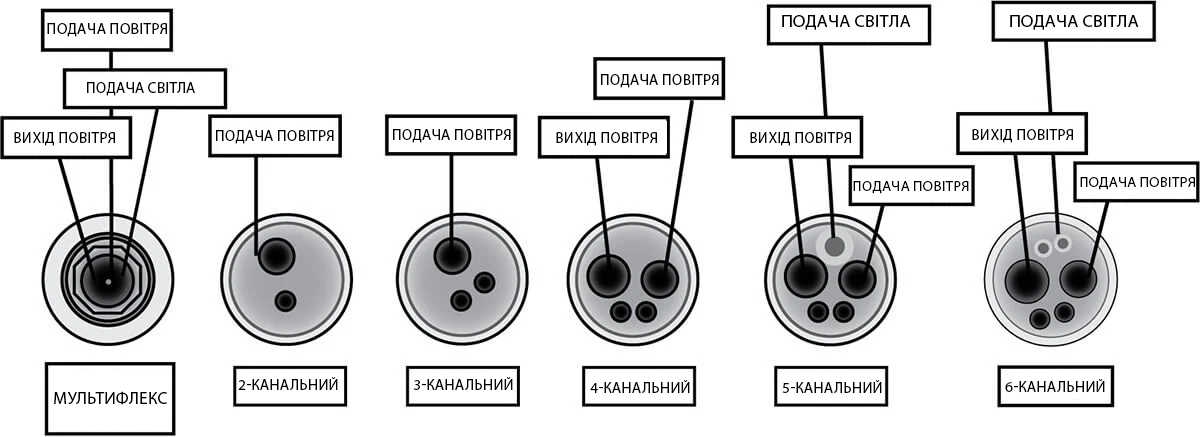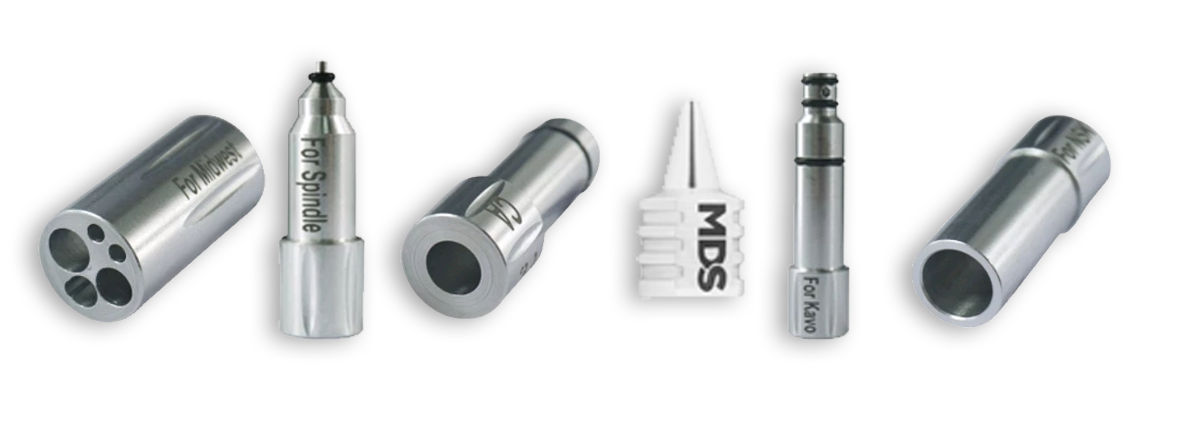Step-by-step care for the dental handpiece. Cleaning, lubrication, sterilization.
Dental handpiece care
Dental handpieces are an integral part of your work, so it is important to take care of them. Regular dental handpiece maintenance and proper care can ensure the best performance and life of your instruments, reducing the chance of any breakdowns during use. Read this article for a comprehensive overview of how to maintain your dental handpieces!
Always follow the instructions for use and care!
Please note that not all dental handpieces receive the same care. Always refer to the manufacturer's instructions for use and follow the instructions carefully.
Dental handpieces are the most used tool in dental offices. During use, the patient's blood, tooth tissue, saliva, materials and other organic residues enter and remain on the outer surface of the tip and can enter the middle through the technological holes. The tips should be cleaned immediately after each use by the patient, every day!
Why use a device for cleaning dental handpieces?
The use of machines to clean and lubricate dental handpieces is critical for several reasons:
- Efficiency: These machines clean and lubricate tips faster and more thoroughly than manual methods. They save time, allowing medical staff to focus on other processes, including quality patient care.
- Predictability: the cleaning machine ensures consistent, high-quality cleaning and lubrication every time, eliminating the risk of human error.
- Durability: Regular and proper machine maintenance extends the life of the tips, saving you money in the long run.
- Safety: By using a machine method of lubrication and cleaning, you do not inhale aerosolized lubricant, which partially enters the air, and reduce the risk of contamination of clothing with lubricant. Where the machines not only clean, but also sterilize the tips, reducing the risk of contamination of patients and staff.
Step 1: External cleaning
· Rinse the tip under running water
· Do not spray antiseptics and other disinfectant mixtures on it, because once they get into the middle of the tip, they damage the internal parts! (it is allowed to wipe the tip with a wet napkin containing disinfectant solutions, but this does not guarantee sterility after this procedure)
· It is also not advisable to soak the tips in any solutions, because in this way, you will still not achieve sterility (the physical phenomenon of surface tension does not allow liquids to enter small diameter holes), but you will definitely damage the inner parts of the tip!
Step 2: Lubrication
Lubricate the tip as recommended by the manufacturer. In general, using the manual lubrication method, take a can of lubricant, having previously installed the appropriate nozzle on the can, and make 2-3 injections of lubricant into the tip. Work the tip for about 10-30 seconds to get rid of excess oil. How to lubricate the turbine tip, we showed in the video, in which hole to lubricate the turbine tip:
The MDS company offers a wide selection of nozzles for lubricating various types of tips, both turbine and mechanical.
The following diagram will help you determine the location of the air inlet on the turbine tip depending on the type of connection. Knowing the type of connection is important both when buying a handpiece and for its maintenance. Before purchasing tips, consider the characteristics and types of connection of the tip to your installation.

If you want to automate the cleaning and lubrication process and do it faster, the automatic tip cleaning and lubrication device we mentioned earlier can be a great option for your office. It will save time, effort and much less grease will be used in the process than with manual lubrication.
MDS is also happy to provide you with this device that cleans and lubricates dental handpieces in literally 2 minutes. We provide a service guarantee and help at every stage!
Step 3: Sterilize the tip using an autoclave
The last stage of dental handpiece care is autoclaving. Autoclaving is currently considered the only most effective method of sterilization. No other method of disinfecting a dental handpiece can destroy the infectious agents inside the handpiece. To ensure proper and rapid sterilization of the tip, choose an autoclave that sterilizes the tips without damaging them. There are also autoclaves designed specifically for sterilizing dental handpieces. Read our article "How to choose an effective autoclave for your dental clinic?" or contact us for advice on choosing an autoclave for your needs
Troubleshooting your dental handpiece
It is important to be careful when using and maintaining the dental handpiece. You should pay attention to the color of the lubricant that comes out of the tip during lubrication and cleaning, to the vibration of the tool that you insert into your tip during rotation, to abnormal noise during operation or external damage. It is mandatory to check the reliability of the fixation of the drill/tool in the handpiece before starting work. If you notice something strange with the tip, contact the tip service or the manufacturer. You can always turn to the MDS team, because our MG Dental Service service center handles handpieces from almost all manufacturers and provides a repair guarantee. Our qualified engineers are specially trained to troubleshoot and repair your dental equipment.
The quality of cleaning your handpiece is a key factor in ensuring medical safety, improving productivity and reducing costs. If you follow the manufacturer's instructions and the above instructions for maintaining your dental handpiece, you will increase the life of your handpiece and keep your clinic running smoothly.
A complete algorithm for the care of the dental handpiece after the procedure
To ensure longevity and trouble-free operation of the dental handpiece, it is necessary to properly care for it after each use. Follow the step-by-step instructions for quality cleaning, lubrication and sterilization.
Stages of care:
- We remove the tip from the installation.
- We remove the boron to avoid its damage.
- We insert a false boron - this prevents grease from getting into the rotor.
- Rinse the tip under running water and clean with a brush, removing dirt.
- We choose a quality lubricant that is suitable for your tip.
- We use the appropriate nozzle for lubrication (there are different types of nozzles).
- We insert the nozzle into the tip.
- We make 2-3 injections of lubricant, ensuring uniform distribution.
- We remove the false boron after lubrication.
- We run the tip at idle speed for 10-30 seconds to remove excess lubricant.
- We place the tip in a sterilization bag.
- We seal the edges of the bag to ensure sterility.
- Place the tip in the autoclave with the transparent part of the bag down.
- Close the autoclave and sterilize the tip at the recommended temperature (usually 135°C).
Following this procedure will help maintain the performance of the handpiece, avoid breakage, and ensure patient safety.
You can familiarize yourself with the assortment of tips here: https://mg-dental.com.ua/nakonechnyky-mikromotorni/
The author is Mykhailo Viktorovych Horbachyk, CEO of the MDS company

